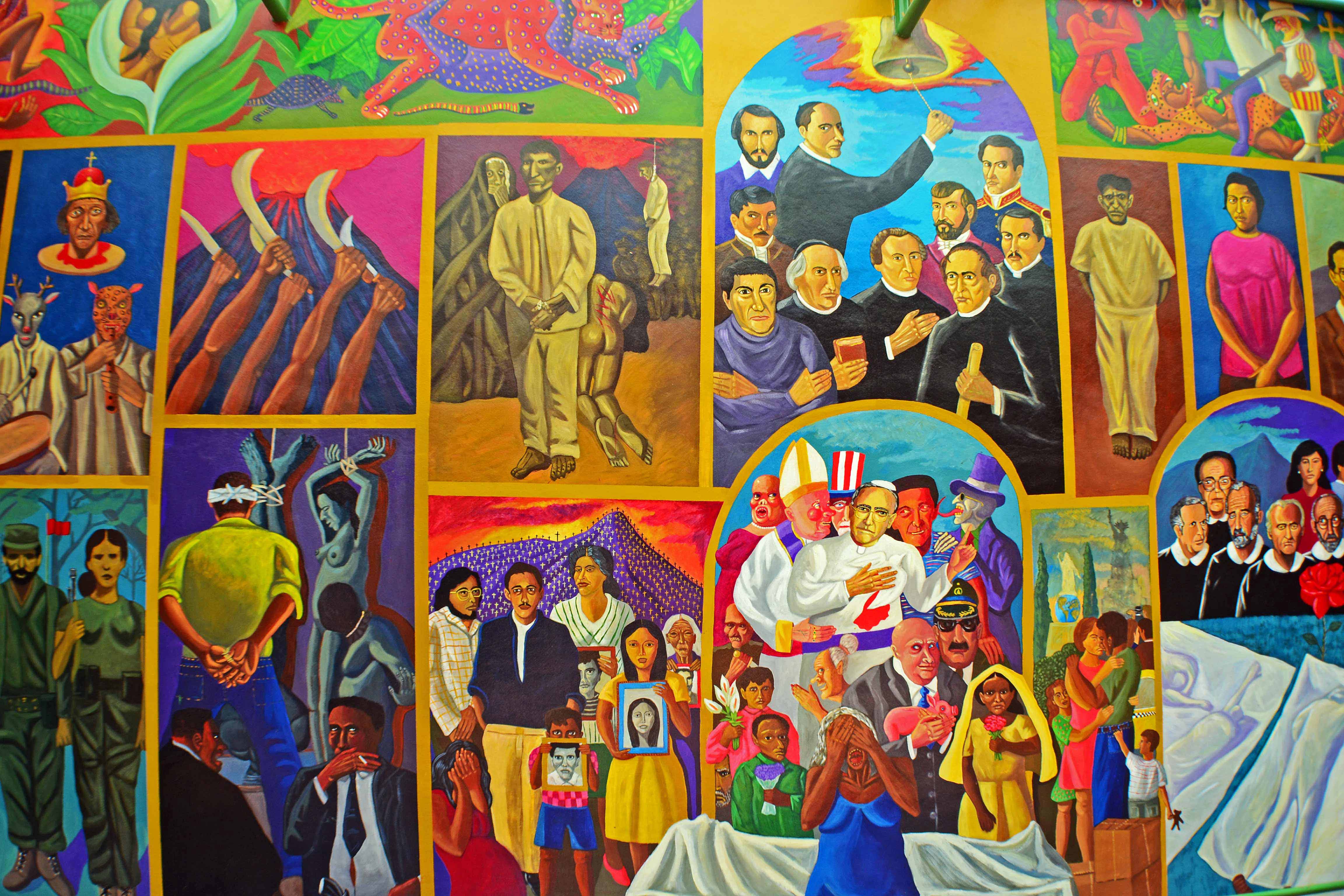When people talk of things to do in San Salvador it often involves a sense of uncertainty and unease. Many backpackers making the trip through Central America find themselves skipping through not only the city, but also the whole country of El Salvador and opting for the more well known destinations of Nicaragua and Guatemala. So if you’re like us, and you find yourself wanting to buck the trend and check out something different, we definitely recommend a trip to San Salvador.
By this stage in your Central American travels the talk of gangs and violence are becoming the daily norm, but you should know not to always believe the hype. The same goes for San Salvador. The truth is, San Salvador is a highly functioning city full of development. If anything we found parts of it too developed. In some areas San Salvador boasts the highest number of fast food restaurants that we’ve ever come across in Latin America. As well as the food, there are also massive shopping malls that showcase the latest fashions and technologies. So what to do with all this development? Treat yourself!
If you are looking for a comfort day, then San Salvador is the perfect place to treat yourself. For us this was a welcomed change after backpacking like the traveling circus for the majority of our time. It was nice to be in a little comfort zone for a few days while checking out all the city has to offer. In between old churches, museums and galleries we made sure to treat ourselves (a very rare occurrence) with a trip to the mall, a movie, some popcorn, a large soda and an ice-cream or two. And it was awesome!
Although showing many signs of moving towards the future, San Salvador still bares the scars of a brutally recent civil war. If you’re looking for a great combination of history through art, then be sure to check out the Museum of Modern Art (MOMA). Along with some pretty wacky stuff, the museum hosts a great walk down El Salvador’s history through classic and contemporary art. From the indigenous ancestors, to the European influence that came with the first coffee plantations, to the more recent impacts of the civil war on the development of Salvadoreno culture.
If you’re still keen for some more learning just down the road from the MOMA is the Museum of Anthropology. Don’t expect the Smithsonian here, but for a $3 entry it will give you some really interesting info on the history of El Sal, starting with a detailed look at the former indigenous inhabitants. The photos on the bottom floor are a bit weather worn and there are few descriptions in English, which can be difficult for a non-Spanish speaker. Overall, though, the museum is an interesting way to spend an afternoon.
Other than that San Salvador is at the disposal of the wanderer. Head into the center of town, check out the old infrastructure that has been patched up and replaced over the years as a result of natural disaster damage. Hit up the market and be sure to grab a couple of pupusas, the national dish in El Salvador. Balls of corn masa, stuffed with your choice of cheese, beans or meat, then flattened and fried on a grill plate. Deliciously served with shredded cabbage and onion, usually three for a dollar!
Where to Stay: For us we couldn’t look past the hostel Cumbres de Volcan. At $8 a night for a dorm (which is well priced in El Sal), the place has everything you need to get some home comfort for a few nights. Great hot water pressure, strong wifi and by far one of the best kitchens we’ve ever come across. Blender, oven, juicer and pot and pans with real handles!
Arriving: Depending on what terminal you arrive in, you can get a reliable public bus for 20c to most places. If you arrive in the terminal oriente get a #52 bus and it will take you almost directly to Cumbres de Volcan. Asked to be dropped off at ‘el torre del futuro’ and then navigate the address from there. If you’re coming from Guatemala here is the easiest and cheapest transport guide.
Leaving: Take the same #52 back to the terminal oriente and from there you can navigate to most locations. If you’re off to Nicaragua then here is another step-by-step guide to help you save a lot of money. If you’re off to the beach, then be sure to check out El Tunco vs El Cuco write up.
Not a Lot of Time: If you are only passing through El Salvador and don’t have time to explore, here is a great way to experience a layover in El Salvador, while still managing to see some great attractions.
